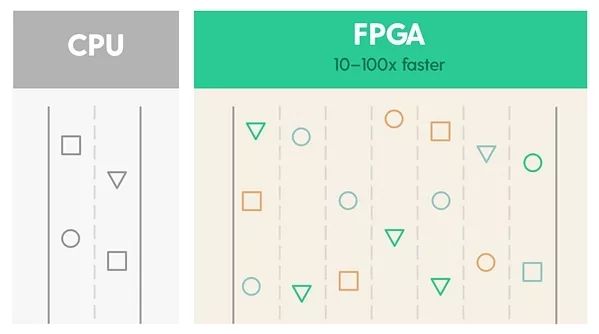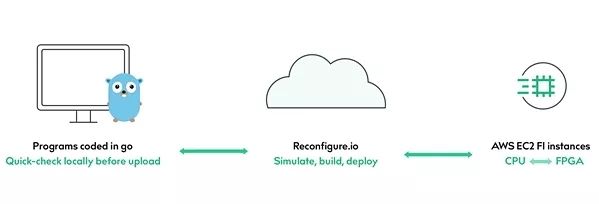The demand for high performance computing is growing
With the continuous upgrading of artificial intelligence and deep learning technology, the requirements for data storage and data processing are increasing. According to McKinsey's Nicolaus Henke, 90% of the accessible data does not exist two years ago, and IDC predicts that by 2020, global big data investment will exceed $203 billion, all of which puts forward the next generation of computing chips. The requirement for exponential growth.
The Moore's Law that Intel has been leading has gradually become difficult to continue, because the Dennard Scaling law (the number of transistors per unit area is increasing and the power consumption remains unchanged) has gradually failed, and the shrinking of the transistor volume has not brought about an exponential increase in speed. Therefore, in the future, CPUs and GPUs will no longer be able to meet the requirements of data storage and data processing in new fields. People are constantly exploring new fields to meet the increasing demand for data processing.
How does FPGA become the "pet" of the new era?
Originally FPGAs were used to make pure logic designs. They were originally used to replace simple digital circuits. Due to the flexibility of their design, interface communication was gradually made.
Later, with the booming development of the communication industry, FPGAs have received the favor of the communication industry due to their parallel execution characteristics, and gradually become the darling of signal processing. Their parallel execution characteristics and flexible upgrade advantages will compete with ASIC and DSP.
Later, software engineers were also interested in this guy who had been in the hardware camp. Therefore, in order to further erode the CPU market, Xilinx took the attention of software engineers, which is the popular concept of HLS, software and hardware collaborative design.
As artificial intelligence and deep learning become more and more demanding, people gradually realize the importance of parallel processing, low latency, low power consumption and reconfigurability. The FPGA itself is a blank piece of paper. Design, and precisely because of this unrestricted, has created its infinite power. Therefore, in the new era, FPGAs have gradually become the "darling" of high-performance computing.
The real advantage of FPGA in high performance computing
The biggest advantage of FPGA compared to CPU is speed. In simple terms, FPGA controls each clock (Cycle) to drive signals and registers, which means that the clock can be used to precisely control tasks. Moreover, the FPGA is executed in parallel, and each Cycle can execute millions of data stream tasks at the same time. Therefore, compared with the CPU, the FPGA performs data flow in parallel through a slower clock frequency, while the CPU has a high frequency. However, the parallel execution capability is poor, and for the same code, the application may run 100 times faster on the FPGA than on a traditional CPU. as the picture shows.

The FPGA contains tens of millions of programmable logic resources with the advantages of parallelism and concurrency. At design time, engineers can take advantage of this parallel architecture to decompose the design into a well-structured data execution flow.
For example, a frame of image, if processed in the traditional way, can process the entire image in pixels. But when processed in parallel, it is broken down into different pieces, processed by different processes at the same time, and then pieced together. Although the process is complicated, it is much faster, requiring input data to be decomposed in an optimal way and efficiently assigned to each process, and then the processed data is collected and reassembled, which greatly improves efficiency.
In a normal CPU, this process involves storing and fetching data from memory and a complex protocol that keeps the process consistent with the current memory state. Even the largest Intel CPU has only 18 cores. In contrast, in an FPGA, the data stream can be designed so that it never leaves the chip. Tens of thousands of concurrent processes can exist at the same time, and the processing time is optimized, so throughput is always the largest.
The advantage of implementing through FPGA is cost. Using FPGAs can save a lot of money because of the increased speed while reducing hardware requirements, an FPGA can perform many server tasks.
Finally, FPGAs have a powerful next-generation interconnect and enhanced flexibility to reprogram on devices with the latest technology developments. Once up and running, the FPGA can be changed at any time to meet changing business needs.
FPGA technology challenges
The biggest challenge facing FPGA technology is the complexity of its use. FPGA programming has always been oriented to hardware description programming, which is circuit design, not simple programming.
Hardware engineers are required to be able to program in complex, low-level hardware definition languages ​​such as Verilog and VHDL.
Hardware engineering is a highly specialized skill that requires years of experience to put knowledge into practice. The professional chip design skills required for hardware configuration keep FPGA costs high, which means that innovation is limited.
Therefore, FPGA technology has always been a high-threshold design technology. Only powerful companies can use FPGA to design. Only some industries that can create high profits will adopt FPGA technology, such as military products, communications, and video. And other fields.
FPGA technology will be the leader in the future
Although FPGAs have high barriers to application, people are steadily breaking this barrier recently. For example, the F1 instance of Amazon Web Services Integration FPGA is designed to build custom accelerators to handle computationally intensive problems, and the outside world has an exceptionally positive response to its release.
FPGA vendors and platform providers can also be programmed in different languages, such as OpenCL, and the evolution of FPGAs has made it easier for software engineers to program FPGAs in an embedded cloud-based environment. This can be done in a more convenient language, such as GO, which is easier and more efficient for users from different backgrounds and languages. Microsoft has said that its Azure cloud service will also enable developers to use FPGAs in the future.

In the past, FPGAs were only used to process large amounts of data, but the value return was high enough to justify the depth of the investment or for very complex and challenging problems, such as military or financial issues. But as FPGAs become more accessible, the technology is suitable for any project where speed and cost are important.
Parallel computing via FPGA accelerates the processing and analysis of massive amounts of data by running a large number of computational processes simultaneously on a single server, meaning that FPGAs can be used for image and video processing, online speech recognition, real-time data analysis, advertising technology, and software. Define the network (SDN).
Cloud FPGAs are being used in many research directions. The security department is using it to study encryption algorithm acceleration, which telecom companies use to study networks and security. Airlines use it to process satellite data and apply machine learning algorithms. Financial services use it to accelerate hardware and determine the credit risk of a derivative product portfolio.
While these use cases are exciting, they are just the tip of the iceberg of FPGA capabilities, and it takes time to explore the full potential of this technology. Although new products are emerging in the hardware world, innovations in these products are often gradual. However, with the advent of the platform, parallel design and innovation are possible in hardware development. For all enterprises, large or small, the use of FPGA will become cheaper and more realistic, and more and more applications will be obtained. .
The industry's use of it is still in its infancy, but as usage increases, FPGAs will enable every enterprise, whether it is a single start-up or an established multinational, to continue to push technology with high-performance parallel computing. Innovation.
E-cig as a substitute of tobacco mainly reminds people of its potential benefits for health. Four ingredients contain in the e-liquid : propylene glycol, glycerin vegetable, nicotine and food grade essence. Nevertheless, smoke from cigarette contains carbon monoxide, tar, arsenic, ammonia, and many other cyanide and acetone.
Advantage
- New ceramic self heating element, Uniform heating
- High reduction, Temperaturecan be accurately controlled
- Safety and Health, Worth a product,Natural and realistic taste,Factory Direct Sale
- Using proprietary technology,Quality assurance, trustworthy
- Oil leakage free, compact, pocket-sized, portable and easy to transport
-
So that smokers can smoke addiction, refreshing, to meet the psychological and physiological needs of smokers, and in line with the habit of smokers for many years.
-
Compared with rechargeable e-cigarettes and mechanical e-cigarettes, the price of disposable e-cigarettes is much lower, which is applicable to a wider range of customers than the first two. It is also the absolute truth for ordinary consumer groups to be cheap.
Wax Device Oem,Thc Wax Device Oem,Marijuana Wax Device Oem,High Cost Performance Wax Device
Shenzhen MASON VAP Technology Co., Ltd. , https://www.masonvap.com